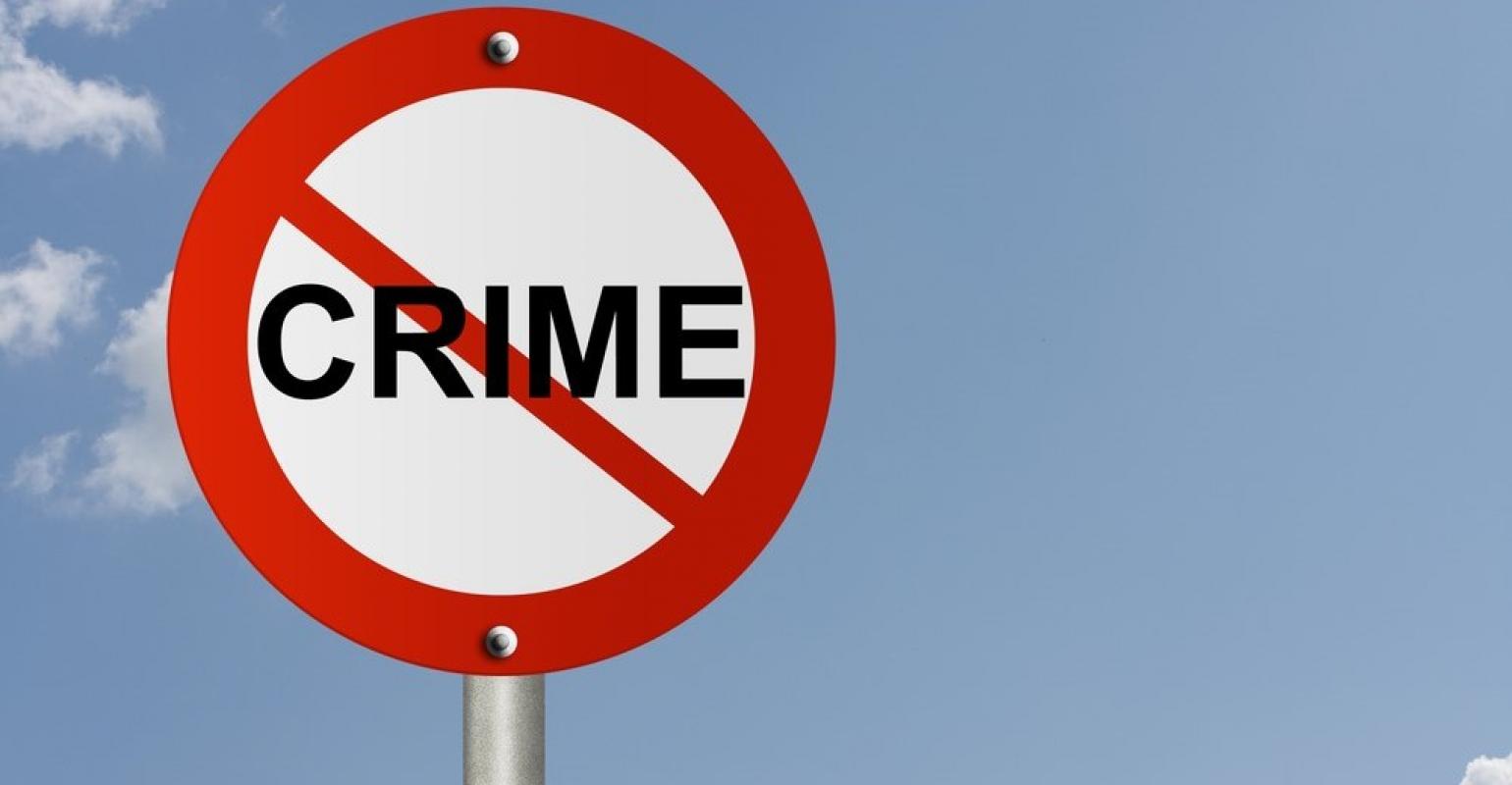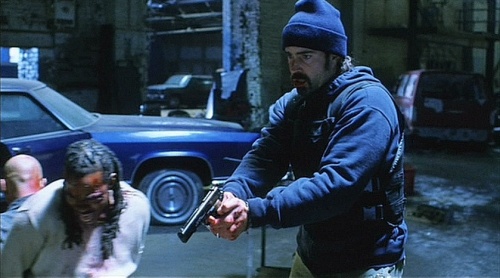There is a void in martial arts training that instructors tend to ignore. We are very good at preserving the art form and equally as good at teaching basic self-defense; what we don’t teach is the important bridge that connects training with the real world. The structure of the bridge consists of what happens with our mind-body connection in a high stress situation. Our body’s physiological changes define what works and what doesn’t. Like it or not, there is a big difference between our training in a controlled environment versus the harsh realities of a self-defense encounter. This applies equally well to armed and unarmed encounters regardless of who has the weapon. Most modern day martial arts weapons training does not revolve around self-defense; it usually takes the form of discipline and character building, tournament play, or what is needed fulfill rank requirements.
What is easily performed during training becomes very difficult in a true combatives situation. According to research on cognitive and physiological effects found in books like Warrior Mindset, fine motor skills start to deteriorate when your response heart rate starts beating at 115 beat per minute (Bpm). At 145 Bpm your complex motor skills start to deteriorate. Above 175 Bpm, you experience irrational fighting, fleeing, or freezing. The optimal rate for survival and combative performance is 115-145 Bpm assuming you are well trained and physically conditioned. Since we can’t stop these physiological changes from happening we can only hope to limit their effects by focusing portions of our training on what happens under real world conditions. In doing so we can find ways to take advantage of the physiological changes that occur and use them to our benefit. In a fight or flight type state of arousal, techniques that revolve around gross motor skills will always be more effective and easily retained for longer periods of time.
A Primer on Physiological Changes During Physical Conflict
There are certain physiological changes that occur within our bodies when engaged in a self-defense type conflict. The intensity of that conflict will determine the levels of physiological arousal and subsequent capabilities of the individual. Dr. Alexis Artwohl’s Deadly Force Encounters was a ground breaking study providing insight into what happens to people in combat. For example, visual narrowing, loss of fine motor control, accelerated breathing, and reduced cognition are just some of the changes that will occur. Selective attention and inattentive blindness are also factors to be considered (refer to The Invisible Gorilla: And Other Ways Our Intuitions Deceive Us). This attention deficit is caused when you focus so hard on one thing you miss everything else, even if it’s right in front of you. You can find the original 1999 video on the internet. You are asked to count the number of basketball passes a small group of students make. The problem is, when you focus on counting, most people miss the man in a gorilla suit coming right through the middle of the group and pounding on his chest. Since the original study was made, you can find other video variations but you get the idea.
Because of the way our body reacts in its survival mode, blood is moved to larger muscle groups and for all practical purposes, fine motor skills and dexterity are lost. In other words the simple act of using keys to open a door or texting a message on your phone will become extremely difficult if not impossible. Knowing about these changes and how to deal with them can give you a significant strategic advantage. Learning to work with the physiological changes instead of against them reduces the reliance on fine motor skills. They also reduce the need for intricate maneuvers or techniques that require strength for success because these are prone to fail as well.
Of course, if you have the dedication, appropriate instruction, and time to train you can reduce the effects to a more manageable state. By training consistently and using high numbers of repetitions, you can compensate for these changes and work through them. Certain martial sports enthusiasts, specialized law enforcement officers and special operations units in the military train to the point where they can operate in an elevated state of arousal for significant amounts of time and remain very effective. The key word here is training; quality training and a great deal of it. You can’t train for four hours a month and expect to have a major impact in your reactions; it just doesn’t work that way. Lt. Kevin Dillon (RET) a long time martial artist and internationally recognized police combatives instructor says it best, “Your body will dictate your physiological changes during a violent encounter; your training will dictate your response.” There is no way to completely get rid of the physiological changes that occur within you so you might as well learn to live with them.
Physiology and Weapons
The loss of fine motor skills reduces the effectiveness of most weapon techniques. Techniques that require intricate maneuvers or multiple skeletal manipulations are lost unless you have hundreds of hours and thousands of repetitions behind you. And even then most weapon techniques have no real world application and should remain in forms competition. If you have trouble wrapping your head around that concept try this simple exercise. Take a personal inventory of what you use the most often from your combatives repertoire. You may have learned hundreds of techniques throughout your martial arts career, which turns into thousands when you use combinations. In real world terms however, your arsenal is quite limited. I would venture to say you only have eight to twelve techniques you do with any unconscious competence. In other words, you really only have a handful of moves that you have practiced so much that you can do with a high degree of skill at any one time. Since a weapon is merely an extension of your existing skills, by default your real world applications with a weapon are limited as well. For the average person placed under a high state of survival stress, you can throw out any technique that is fancy, intricate, or requires fine motor skills. If it doesn’t revolve around a gross motor skill, the average person has lost the fight before it’s even begun.
The Walking Cane in Self-Defense
Since the cane does not require fine motor skills nor does it require thousands of repetitions to become proficient, the walking cane is an effective self-defense weapon. At its most basic level, the techniques revolve in and around gross motor skills. You can easily hold a cane with one or both hands to block, poke, jab, strike, swing or push. The crook of the cane (depending on its design) makes it easy to grab, hold, or pull. Like any other martial discipline, there is a difference between the art form, what we teach for self-defense, and any real world application. Therefore, in order to be effective, you need the correct balance of all three. The cane fits the bill; it can be used for all three purposes. Let’s focus on self-defense though.
For example, say you are taking a leisurely walk around your favorite park. You are suddenly confronted with an angry young man demanding that you give him your wallet. Remember, the same physiological changes are happening to him as well (visual narrowing, selective attention, reduced cognition) only he doesn’t know it. You stop, raise your left hand up in a semi-surrender position and start talking to him; you ask him not to hurt you what is that he wants. Your right hand remains on the cane. As soon as he starts to answer, “I said, give me…,” you flip your cane into his groin area; when he bends forward (a natural reaction) you grab your cane with both hands, step forward, and deliver a strike to where the neck joins the shoulder area in order to apply a brachial stun; if this doesn’t take him down, you follow up by planting the crook of the cane behind his neck pull him down to the ground. Because you split his attention, you delayed his reaction time and in doing so, gave yourself a valuable edge in order to prevail in the encounter.
Enter Grand Master Mark Shuey
Grand Master Mark Shuey of Cane Masters is probably the biggest proponent of the use of the walking cane for self-defense in and out of the United States. He is an internationally recognized cane master and the quality of his hand made canes is internationally recognized. For example, Grand Master Shuey helped create a special cane after working with the design from Shi Xing De, a high ranking Shaolin monk in the United States. Shi Xing De is a disciple of the Song San mountain temple located in northern China and now teaches in Santa Cruz, California. This special cane and its detail took three months to develop. It was crafted by Cane Master’s Sensei, Merle McAplin. The resulting Shark Fin Cane was sent to China and was well received at the Shaolin Temple.
The American Cane System is pure self-defense. Its primary mission is not to enlighten you but to help defend you. Let’s face it, and as with most martial art type weapons, you are not walking around the shopping mall with a Tai Chi Sword strapped to your side; but you could be walking around with a cane. Though the American Cane System incorporates more intricate maneuvers at the intermediate and advanced levels, the core of this program is designed to make use of the mind and body connection I spoke of earlier. The program bridges the gap between art and real world application. All of the core techniques can easily be applied under stress where your physiological changes limit your response capabilities. Many can be applied equally well while standing or sitting.
Grand Master Shuey’s newest program, Cane-Fu, is ear marked for those over 50 or disabled. Grand Master Shuey states, “We have created the Cane-Fu system, which contains the most efficient and effective exercises and self-defense techniques from the American Cane System. The modalities [skill sets] are easy to learn and will help instill a sense of confidence, as well as a higher level of health, to those who are willing to devote the time to practice them on a regular basis. ” All Cane-Fu techniques are simple to learn and easy to retain. Because the techniques can be executed using gross motor skills, they work well within the framework of the physiological changes you experience under a fight or flight type situation.
Grand Master Shuey considers Cane-Fu in this light: “Please understand that these techniques are just the basics, and that with a little imagination, you can create your own techniques that will feel more natural and reflexive. If this information can help to prevent just one senior citizen or disabled person from being a victim of a violent crime, it will be well worth the time and effort I have put in to create it.”
I think Cane-Fu is very well thought out and includes many options for its use. The techniques may be basic and originally targeted for those over 50 or disabled, but they create a core set of skills which will be of interest to anyone wanting to learn to use the cane in self-defense. Because these skill sets can be easily retained, your chances of prevailing during an encounter are significantly increased. Once you get the foundation, you can create your own combinations or your own training forms. You can easily adapt the techniques to your own needs or limitations.
Though there is a set curriculum for Cane-Fu and a Black Belt rank structure for the American Cane System, Grand Master Shuey doesn’t limit his students by locking them in. Instead he encourages continuing their education with the cane as a lifetime passion. As with all good teachers, he shows you a way, not the way. He understands all he can do for a student is open a gateway; it’s up to the student to walk through.
As a long time martial artist and police combatives instructor, I can certify without hesitation that just about anyone can benefit from this training. I have been involved with the cane on and off for more than 12 years and I have yet to get tired of it. For those seeking more advanced training beyond a core self-defense program, you can continue training in the American Cane System up to Black Belt or become a certified Cane Master. The Cane Master certification is highly distinguished honor in and of itself. To my knowledge, though the cane may be taught elsewhere as part of another system, Grand Master Shuey’s programs are equally as comprehensive as they are well rounded. If you ever get the chance, I highly recommend exploring the use of the cane for self-defense and exercise.
Closing Thoughts
There are very few martial arts weapons that have real world applications outside the training hall or competitive forms arena. More importantly, there are very few weapons you can carry legally around the world. Luckily for those looking for a viable option, the walking cane is readily available in many styles. Whether your focus is strictly self-defense or you wish a higher level of expertise with shock and awe, the cane has something for everyone. I would recommend that as instructors we include training that revolves around the physiological changes we experience under stress in conflict. If you can’t do it under stress, it is of little value to you in a fight or flight type situation. I also recommend that you take a look at the walking cane and offer your students a form of weapons training that clearly has a real world value.
I train in the American Cane System by Cane Masters. I met Grand Master Mark Shuey, in 1999 while helping him with a seminar in Kissimmee, Florida, and I have had a love affair with the cane ever since. Including the walking cane in your weapons training will offer something for everyone. Training with the cane will open up new possibilities for you and your students. You don’t even have to reinvent the wheel; Cane Masters has already done it for you.











